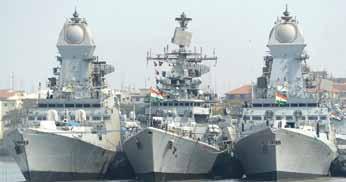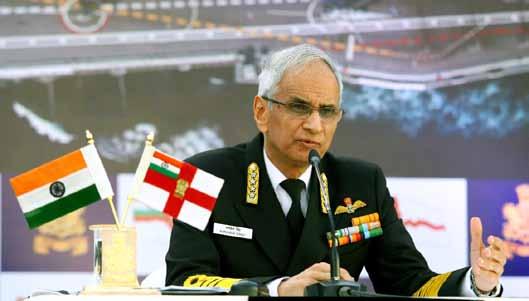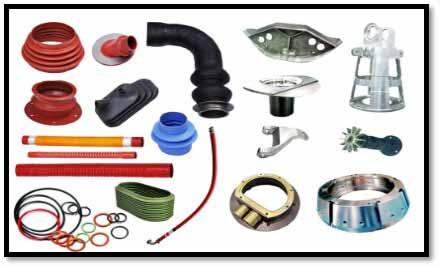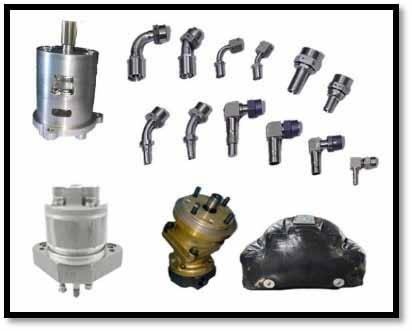
9 minute read
Thrusting Outwards in Maritime Dominance
The Indian Navy was able to address very early the challenges posed by Covid-19 pandemic in the operational domain and quickly put into place processes and protocols to ensure that operational readiness of its units was not affected. And, that was crucial for evaluating the maritime security environment in the Indian Ocean Region on a continuous basis, especially considering the live situation with China across the LAC in Ladakh, points out Admiral Karambir Singh, PVSM, AVSM, ADC, the Chief of the Naval Staff of the Indian Navy in an exclusive interview with Aeromag Asia. Besides, in the backdrop of Atmanirbhar Bharat Abhiyaan’ and a significant hike in FDI cap in defence sector, the Indian Navy, with selfreliance and indigenisation as its foundational aspects, will remain committed to ensure that indigenous shipbuilding delivers dividends, both technologically and economically, the Chief of the Naval Staff asserts. Excerpts from the interview:
Admiral, in the face off with the Covid-19 pandemic, how – if at all – has the Indian Navy changed in its priorities with regard to Float, Move and Fight segments?
Advertisement
There is no doubt that we are currently grappling with an extraordinary situation. However, regardless of the challenges, ‘Fight’ is, and shall always be, the top priority for the Indian Navy. Our singular aim is to remain a ‘Combat ready, Credible and Cohesive Force’ ready to meet present and future challenges in the maritime domain. The pandemic did pose some challenges in the operational domain. These were, however, addressed very early during the outbreak and the Indian Navy was able to quickly put into place processes and protocols to ensure that operational readiness of our units was not affected. Apart from this, while the Indian Navy met all its operational tasking, it is also concurrently contributing to the national effort in fighting the pandemic.
Our operational readiness has been aptly showcased by our willingness and ability to look ‘outwards’ and render assistance to our friendly nations in IOR (Indian Ocean Region), when the natural tendency is to look ‘inwards’. In this context, the Indian Navy undertook Operation Samudra Setu to repatriate around 4,000 Indian nationals from IOR countries during the Covid-19 pandemic. We also undertook Mission Sagar to provide ration, stores, medicines and medical team to littoral nations in the IOR. At the same time, fully mission ready ships were also deployed across the vast expanse of our areas of interest through missionbased deployments. We are also brainstorming on lesson learnt from the pandemic so as to integrate changes in our acquisitions, operations and training philosophies.
What was the most challenging aspect of the repatriation mission undertaken by the Indian Navy to bring back our stranded citizens in Iran, Maldives, Sri Lanka and the Arabian Gulf countries in the wake of the coronavirus outbreak?
As part of ‘Operation Samudra Setu’ conducted from May to Jun 20, Indian Navy undertook evacuations of approximately 4,000 Indian nationals from Maldives, Sri Lanka and Iran. We worked closely with our Missions in order to ensure the success of the evacuation.
Covid-19 pandemic has had significant impact on ships and seafarers due to the enclosed environment and forced ventilation systems onboard ships. You are all well aware of the challenges faced by MV Diamond Princess off Japan following the outbreak of Covid-19 onboard. It was in these trying times and difficult conditions that the Indian Navy took up the challenge to evacuate our overseas citizens.
The greatest challenge for the Indian Navy was to avoid any incident of outbreak onboard the ships during the evacuation operation. Rigorous measures were put in place and medical/ safety protocols unique to the operating environment of ships were implemented. These were strictly followed onboard the ships undertaking Operation Samudra Setu.
Ships best suited for Covid-19 related social distancing norms vis-à-vis medical arrangements and carrying capacity, undertook the operation. Ships were specially provisioned with medical facilities onboard and Covid-19 related equipment. Women officers and military nursing staff were also embarked for women passengers. The operation was even more significant considering the live situation with China across the LAC in Ladakh.


How do you propose to meet the challenges posed by China in the Indian Ocean region and consequent maritime contingencies?
The Indian Navy is aware of deployments of various navies in the IOR and Gulf of Aden. Activities in the maritime domain
are monitored closely by the Indian Navy. As a professional force, we evaluate the maritime security environment in the IOR, on a continuous basis. Capability and capacity in the form of force readiness and force planning of the Indian Navy is shaped to meet any challenges in the region.
In which sphere does the Atmanirbhar Bharat Abhiyaan drive make the biggest impact on Indian Navy’s operational assets?
On May 12, 2020, the Prime Minister had announced a ₹ 20 lakh crore economic relief package for ‘Atmanirbhar Bharat Abhiyaan’. Needless to say that, the government is taking steps to promote the indigenous industry. The Indian industry is evolving at a rapid pace and quality products are being manufactured within the country. This is being leveraged by Navy to develop systems and equipment to replace foreign origin items with indigenously developed ones.
While we have achieved considerable progress in ‘Float’ and ‘Move’ category, indigenous development of high-end technologies, their translation into defence hardware, induction and standardisation in the ‘Fight’ category are the main focus areas for the Navy. ‘Self-Reliance’ and ‘Indigenisation’ have been foundational aspects in our force development plans over the last several decades. We have been able to transform from a ‘Buyer’s Navy’ to a ‘Builder’s Navy’. Shipbuilding and nation-building are synonymous and the Indian Navy is committed to ensure that indigenous shipbuilding delivers dividends, both technologically and economically.

While boosting domestic defence manufacturing, how would an import embargo plan and hiking foreign direct investment in defence manufacturing through automatic route to 74% reflect on the Navy’s acquisition plans?
Whilst the import embargo is also called ‘Negative List’, I like to call it as ‘Indigenisation List’ as it better reflects the core concepts of ‘Self Reliance’. The first indigenisation list of 101 defence items was announced by the government in Aug 20. The objective of this list is to apprise the Indian defence industry about the anticipated requirements of the armed forces and offers them an opportunity ‘to manufacture items in the indigenisation list by using their own design and development capabilities or adopting the technologies designed and developed by Defence Research and Development Organisation (DRDO)’. The Technology Perspective and Capability Roadmap (TPCR) first issued in 2013 and later revised in 2018 also had a similar objective. However, it would be vital for the R&D agencies and Indian defence industry to meet the timelines as mentioned in the indigenisation list, to enable the defence services to maintain the desired levels of capability and operational readiness.
Enhancement of FDI to 74% through automatic route is likely to accrue significant benefits to the defence sector. It would encourage multinationals to set up manufacturing bases in India or engage local companies. The enhanced controlling rights with foreign OEMs (original equipment manufacturers) would incentivise sharing technology, thereby boosting tech base in the country.
Availability of niche technology through the FDI route would also provide opportunities to Indian enterprises to leverage available technology, by shortening the learning curve through strategic partnerships. Enhancement in FDI would boost technological know-how and overall competitiveness of the Indian industry to offer solutions not only in India, but also for export.
In Naval aviation, what is the status of the twin-engine deck-based fighter and such integration into the Combat Management System?
The LCA (N) Mk1 programme was established to meet IN Carrier based fighter requirement. It has been designated as a technological demonstrator as the aircraft does not meet the navy’s operational requirements (ORs). Considerable lessons have been learnt during its developmental journey viz. proving of niche technologies such as Arrestor Hook System, Light Weight Strengthened Undercarriage and technologies to demonstrate Carrier Compatibility Testing. To gainfully utilise this expertise and to meet Indian Navy’s requirements, we along with DRDO (ADA) and HAL, have embarked on the critical indigenous project to develop a Twin-Engine Deck-Based Fighter (TEDBF). The ORs have been finalised and preliminary design review is being undertaken by ADA. It is planned for the aircraft to be integrated into the combat management grid of the Navy.
An AS9100D & CE Certified Company

An emerging MSME in the fields of aerospace and defence, Aerospace Engineers Private Limited (AEPL) is now certified AS9100D, ISO14001, ISO45001, NADCAP, CE Marking and ZED. It was founded in 2011 for manufacturing high precision non-metallic parts (rubber, plastic & composite), metallic parts and assemblies. And, since the beginning AEPL has been working on the ‘Make in India’ Concept. Over the years, the company has indigenised more than 15,000 parts which include high precision and critical sub-systems for helicopter (military, navy & coast guard) programme, fighter aircrafts MiG29, Sukhoi 30 MKI, MiG 29K (under development), missiles, torpedoes and rocket programme.
Some of the critical assemblies like canopy seal are developed and supplied for MiG29, R. Sundaram Su30MKI, Kiran, (MiG29K and MiG29 trainer under development). Lubrication oil pump (Geo Managing Director & CEO, Rotor) for ALH is under development for naval helicopter, while hose assemblies (metal hose Aerospace Engineers Pvt.Ltd. as well as rubber hoses which use fluids like hydraulic oil, lubrication oil, fuel and pneumatic with pressure rating up to 210 bar working pressure), rubber fuel tank for UAV programme, (rubber fuel tank for HAWK (Navy) is under discussion for development), composite assemblies like convergent and divergent nozzle for AKASH, numerous details for Brahmos, Igniter and TVC assembly for LRSAM, fuel restrictor valves, solenoids, etc., are being designed, manufactured, assembled and qualified with approved and authorised agencies like CEMILAC, RCMA and DGAQA.
AEPL which practice AS9100D QMS with high discipline work force of about 300 employees, strongly believes on ‘Vocal for Local’ and is proud to point out that most of the employees are from the nearby village. With their efforts, AEPL is making high-quality parts for aerospace and defence and its manufacturing facility is approved by DGAQA. World class facilities are also available for manufacture of rubber products. Dust-free rubber manufacturing is a unique facility in India. As many as 30 rubber presses (32 tonne to 500 tonne) are available with a maximum bed size of 1250 x 1250mm. So far, AEPL has developed 122 compounds which meet various standards (international & Europe). These compounds are duly certified by CEMILAC. For the manufacturing of high precision machining parts, the company has 25 CNC machines (Turning Centres, Machining Centres, Turn Mill Centres, Mill Turn Centres, 4 and 5 Axis setup, CNC wire cut, Poly turn, etc.)
These parts are being supplied for own assembly shop, HAL (Tejas), ALH, LPSC, VSSC, ISRO, Apollo Aerospace, BDL and DRDO. AEPL also has inspection facilities like CMM, VMM, UTM, Profile Projectors, Ultrasonic Testing and LPT, besides environmental test and testing facilities for rubber and metallic parts. The company, now, is focusing on sub-system developments like sub-assemblies of aircraft, OH and refurbishing rubber fuel tanks, gear box maintenance, actuator repair and overhaul, world class testing facilities for aerospace and defence requirements, clean room facility for composite manufacturing, which are planned in its new facility at Hosur (near Bangalore).
Make In India Made For India Made For Globe












